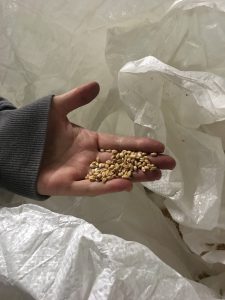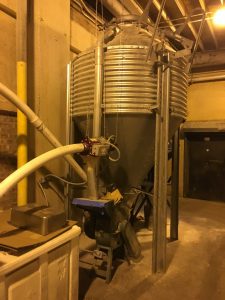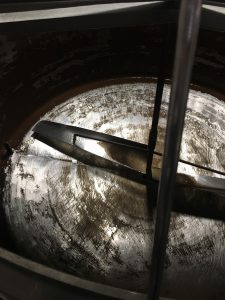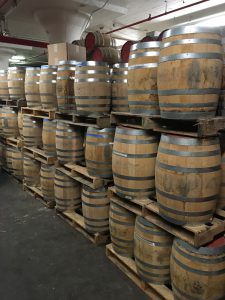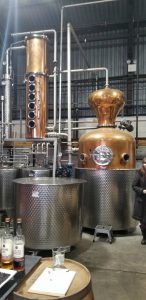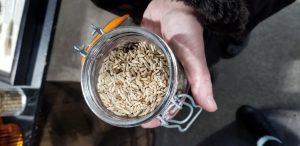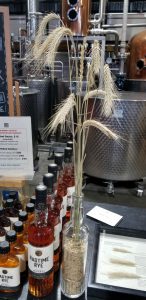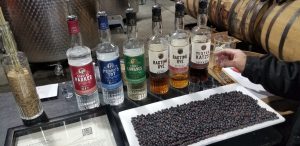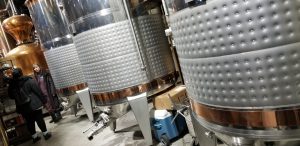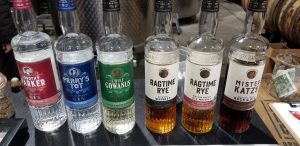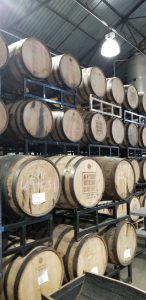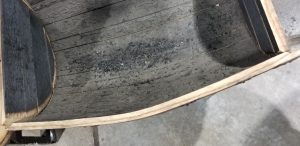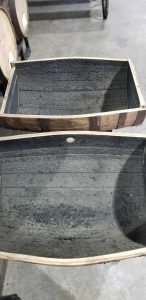The distillery i visited was the Van brunt still house on 6 bay street, Brooklyn, NY 11231 which started around 6 years ago. Majority of the space was use for the distillery process and only a small room was used as a bar for people to buy whiskey and relax. I met Josh the bartender who went to inform Rachel the tour guide that I arrive from my tour and said to try any whiskey I want while waiting for her to set up. After some research, I learn that Van Brunt Stillhouse was co-founded by Daric Schlesselman and Sarah Ludington from a interesting magazine featuring a small interview about what they produced, their best products and their choice of location.
They told me they get most of their ingredients (Malt Barley, Wheat, Corn, Rye from the finger lakes region but have some small supplier elsewhere too. They clearly understand the distillery process and can clearly explain it to the guest. Josh the Bartender is a really nice guy, trying to make sure I understand everything, asking If i want to taste the whiskey, and answering every question I asked. He also explain how they make their special drinks like and old fashion style, Manhattan style, etc. The main supplier is the Oechsner Farms owned by Thor Oechsner who supplies not just Van Brunt Stillhouse but other breweries too. The farm makes sure to properly clean, dry, store and handle their grain for the best quality. The grains are cleaned and process into a two thousand pound super sack and shipped out to their partners. They grow warthog hard red winter wheat, rye, soft white winter wheat, corn, hard red spring wheat, buckwheat and clover. They also have connection with other farms but they are not certified as organic farm currently. The only whiskey I couldn’t try was the Single Malt Whiskey because it wasn’t a farmed product.
The process for their Whiskey production starts off with weighing the ingredients on the giant scale they have to determine how much whisky they can make at once. 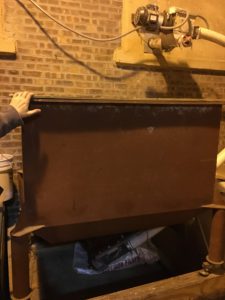
Then it goes to the miller to get milled into smaller size pieces around coarse size I’m told and then it goes through a small pipe that goes through the wall and straight to the Mash Tun where the crushed grains goes through the mashing process to convert the starch in the crushed grains into sugar for fermentation.
After they are mash and ready they are sent to the stainless steel tanks that can hold 3000L at once for a short period of time for their first fermentation.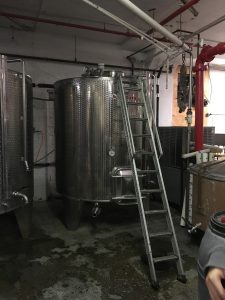 They have three tanks in total each holding 3000L at once but they only have on Pot still that can hold up to only 750 L at a time so they repeat this process around 3-4 times for every batch.
They have three tanks in total each holding 3000L at once but they only have on Pot still that can hold up to only 750 L at a time so they repeat this process around 3-4 times for every batch.
Then the Pot Still they use which boils so only the alcohol is turn into gas and goes through the copper pipe into the cooling area to reduce the heat and turn them back into liquid and then the process is repeated twice for each 750 L of mash. The first run is the rough run where the results is that the alcohol still looks a little disgusting, not clear enough yet, and that is when they repeat the process a second time known as the Spirit Run to get the end result transparent and and ready for 2nd fermentation. 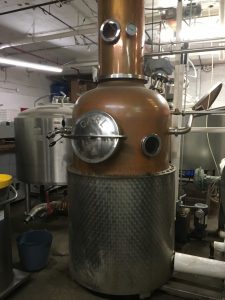
The finish products goes into the Charred barrels for 16-24 months of fermentation and when they are finish they are brought down to around 40 to 65 proof.
The leftover of the end result goes through a machine that separates the mash from the water, the mash is sent to a compost area and the water goes though the drains. 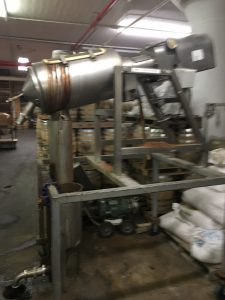
I enjoyed my visited to this Distillery, fantastic customer service skills, knowledge is top notch, and they are all very friendly. Josh and Rachel are nice people and this is a great place to visited if you like Whiskey. They are planning are expanding and finding another warehouse to purchased around the area so they can make more whiskey at once.

